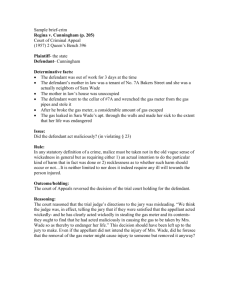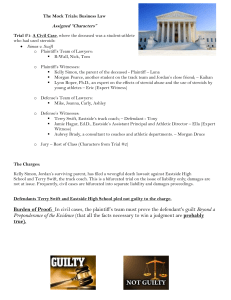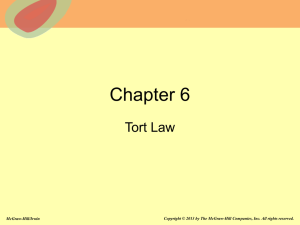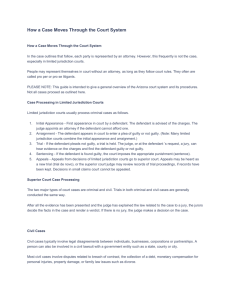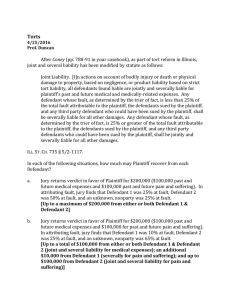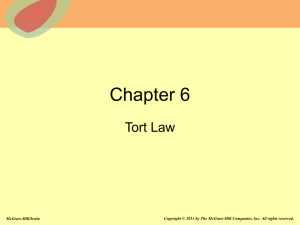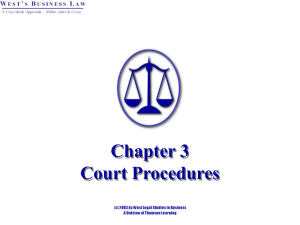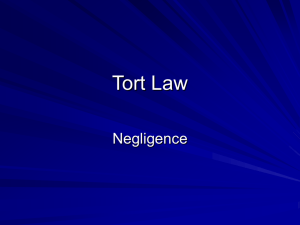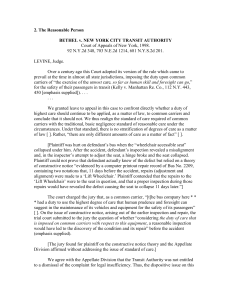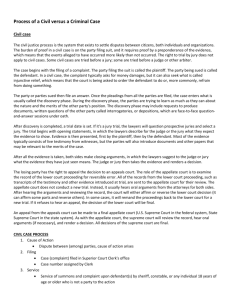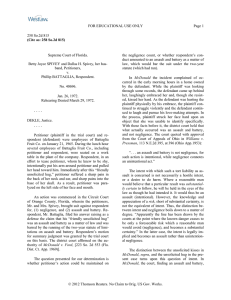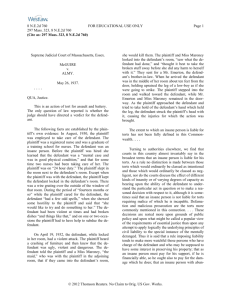Vaughan v. Menlove
advertisement
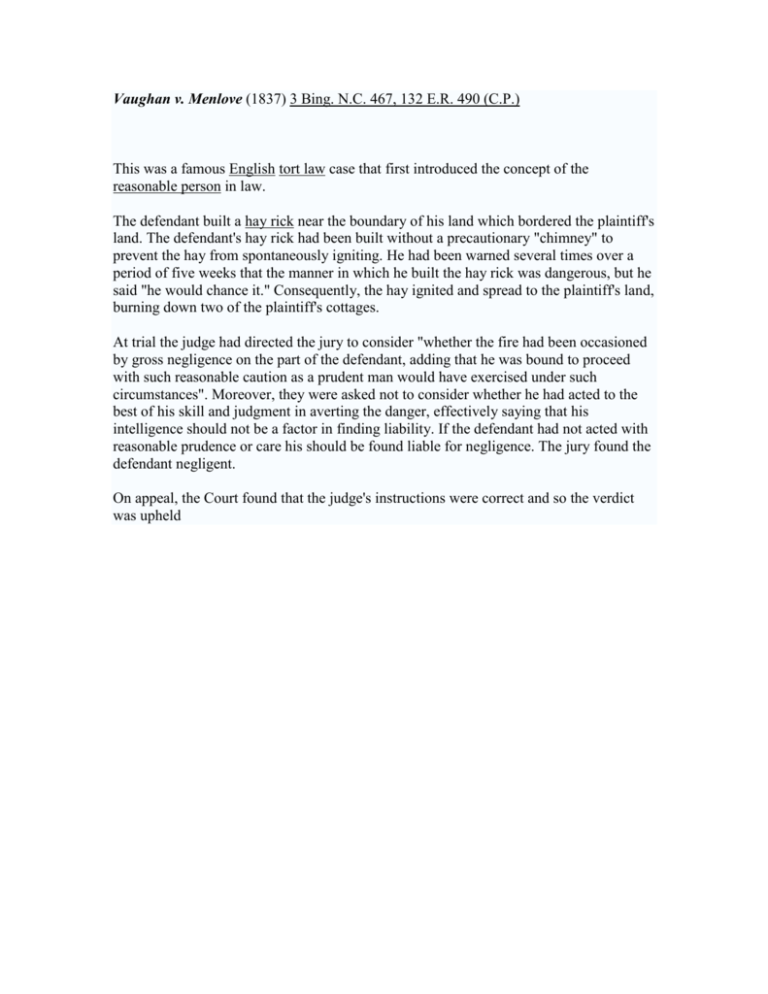
Vaughan v. Menlove (1837) 3 Bing. N.C. 467, 132 E.R. 490 (C.P.) This was a famous English tort law case that first introduced the concept of the reasonable person in law. The defendant built a hay rick near the boundary of his land which bordered the plaintiff's land. The defendant's hay rick had been built without a precautionary "chimney" to prevent the hay from spontaneously igniting. He had been warned several times over a period of five weeks that the manner in which he built the hay rick was dangerous, but he said "he would chance it." Consequently, the hay ignited and spread to the plaintiff's land, burning down two of the plaintiff's cottages. At trial the judge had directed the jury to consider "whether the fire had been occasioned by gross negligence on the part of the defendant, adding that he was bound to proceed with such reasonable caution as a prudent man would have exercised under such circumstances". Moreover, they were asked not to consider whether he had acted to the best of his skill and judgment in averting the danger, effectively saying that his intelligence should not be a factor in finding liability. If the defendant had not acted with reasonable prudence or care his should be found liable for negligence. The jury found the defendant negligent. On appeal, the Court found that the judge's instructions were correct and so the verdict was upheld





